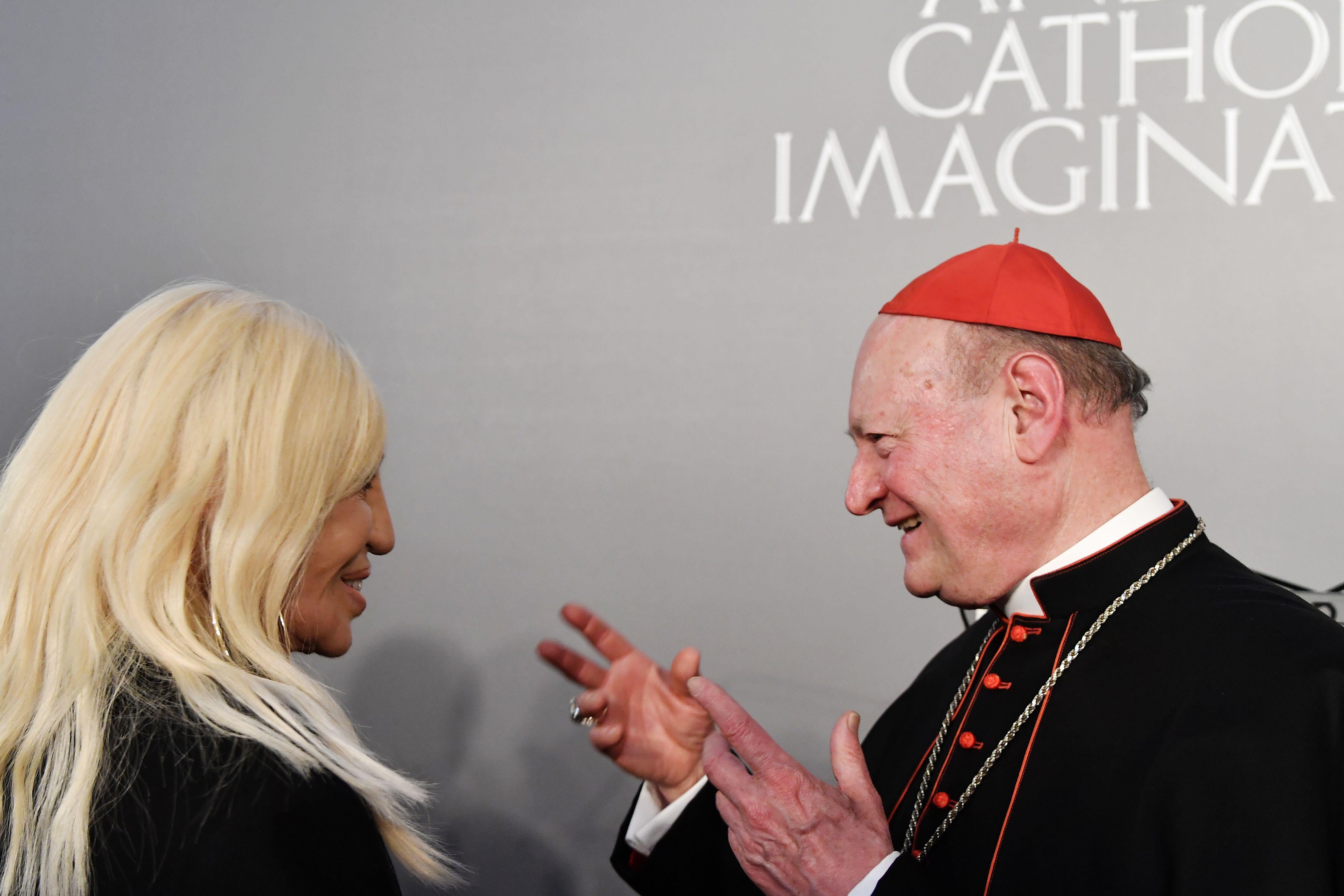Even for people accustomed to dealing with exquisitely fragile artifacts, the upcoming Costume Institute seems like a delicate operation. Heavenly Bodies: Fashion and the Catholic Imagination, which opens May 10 at the Metropolitan Museum of Art required accommodating the sensibilities of both devout Catholics and fashion people and—at next week’s Met Gala—inviting celebrities to treat religious vestments as the theme for a costume party.
It also involved international diplomacy. Met curator Andrew Bolton has said he first approached the Vatican about this hypothetical exhibit in 2015. Eventually he secured a loan of about 40 pieces of ecclesiastical garments and objects from the Office for the Liturgical Celebrations of the Supreme Pontiff, including a tiara with 18,000 diamonds worn by a 17th-century pope. All told, the loan took about two years and eight trips to the Vatican to negotiate. He consulted locally with prominent Catholics including Jesuit writer and priest James Martin and New York cardinal Timothy Dolan. The New York Times reported that items from the Vatican will be displayed separately from the rest of the show, presumably to defang criticisms about mixing the sacred and the profane.
Italian Cardinal Gianfranco Ravasi, head of the Vatican’s Pontifical Council for Culture, was the Vatican’s main point person. A spokesman for the Pontifical Council for Culture told me that the cardinal was not involved in planning or organizing the show, but he contributed an essay to the catalog and appeared next to Donatella Versace at a press conference for the exhibit in Rome earlier this year. The American Catholic news site Crux has described him as the Vatican’s William F. Buckley or Noam Chomsky: “an intellectual who’s become a star through a combination of brain power and media savvy.” Also, this is the guy who drew notice in Catholic circles in 2016 when he tweeted lyrics to “Space Oddity” after David Bowie’s death.
The Catholic Church, for its part, reined in some of its sartorial extravagances over the course of the 20th century. Pope Pius XII, for instance, cut the traditional 9-foot train worn by cardinals in half in 1952. The old trains had been so long that cardinals required footmen to scurry behind them hoisting up all the extra fabric. Later, Pope Paul VI lowered the height of the traditional mitre cap, and discouraged prelates from wearing red shoes and silver buckles.
Meanwhile, the Second Vatican Council in the early 1960s released nuns—always more plainly dressed than the church’s male leaders—from the obligation to wear their traditional habits.
But the items on loan from Rome, some of which have never before left the Vatican, do not tend toward such restraint. They include a towering ovoid tiara given from Queen Isabella of Spain to Pope Pius IX, a loose 19th-century vestment elaborately emblazoned with an image of Jesus carrying the cross on his back, and a pair of red slippers worn by John Paul II. The show’s primary interest, meanwhile, is in work by (primarily) Catholic-raised designers who acknowledge the church’s aesthetic influence, like the mesh Versace evening gown from the late ’90s that sports a huge gold cross.
Meanwhile, the show’s first true test will come before it even opens to the public. On Monday, the Costume Institute will celebrate the exhibit’s opening with its annual gala, which serves as a test for celebrities tasked with trying to dress to themes like “China” and “Punk.” This year the dress code is “Sunday best.”
